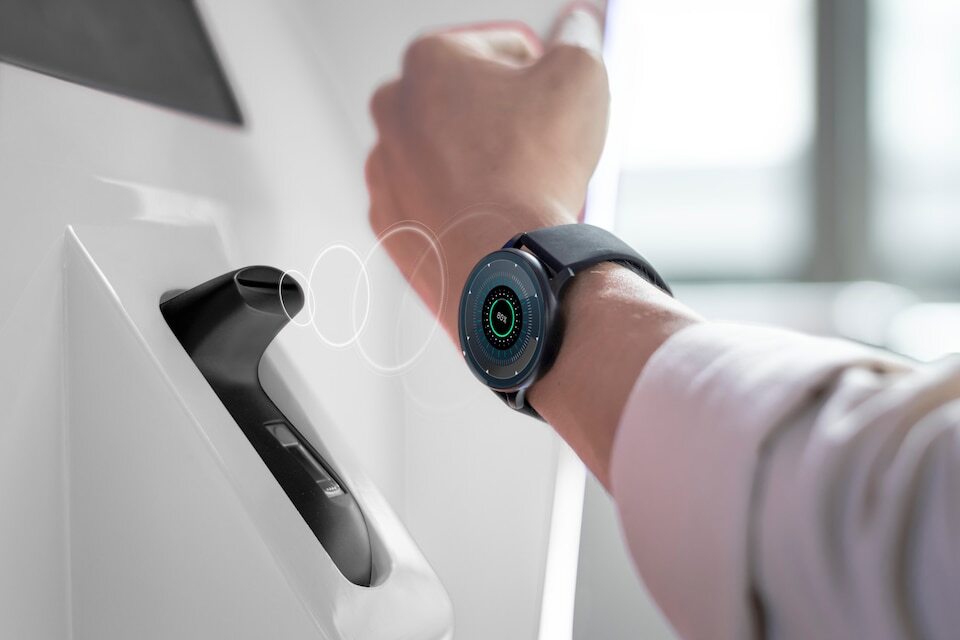App building for indoor navigation and indoor positioning
In-door navigation in mobile apps and web apps
As a society, we’ve grown reliant on GPS technology, to guide us through the unfamiliar. However, once we step inside a large indoor complex such as an airport, museum or shopping mall, our GPS cannot help us. The reason is quite simple – GPS signals, originating from satellites, struggle to penetrate roofs and walls. This is where the world of indoor navigation technology comes in handy.

Indoor Navigation: How does a web development agency use it?
Indoor navigation (also known as Indoor Positioning Systems, IPS) is a solution for locating objects or people inside a building using lights, radio waves, magnetic fields, acoustic signals, or other sensory information collected by mobile devices.
Unlike traditional GPS, which uses satellite signals for location, indoor navigation employs a variety of technologies designed to work effectively within the constraints of a building.
Our Geneva and Zurich-based app & web agency is constantly searching for the most modern tools that power indoor navigation.
![]()
Modern Tools Powering Indoor Navigation
- Beacon Technology: Using Bluetooth Low Energy (BLE) signals, beacons are small wireless transmitters that interact with mobile devices within their proximity. They broadcast signals that mobile applications can detect and interpret. Being unobtrusive, cost effective and easy to install, it is becoming increasingly popular within development.

- Wi-Fi Positioning Systems (WPS): WPS uses the strength and origin of a Wi-Fi signal to locate a device. It is an economical solution and practical, often favored as most buildings are already equipped with Wi-Fi infrastructure.

- Ultra-Wideband (UWB): UWB is well known for its extreme accuracy and real-time tracking by measuring the time a radio wave tales to travel from a transmitter to a receiver. Some smartphone manufacturers are integrating UWB chips into their devices. For example, Apple’s U1 chip, included in devices like the iPhone 11 and later models, uses UWB for spatial awareness – allowing devices to understand their precise location relative to other devices in the same room. The same technology powers Apple’s AirTags, enabling them to be precisely located by U1 equipped devices.

- Visible Light Communication (VLC): VLC systems utilize LED lights, which flicker at high speeds to transmit data. The human eye can’t detect this flicker, but a smartphone camera can. By analysing these signals, an app can determine the user’s position within a building.

- Magnetic Positioning: Our smartphones come with built-in compasses. Magnetic Positioning capitalizes on this, utilizing the Earth’s magnetic fields, which are subtly distorted by a building’s steel structure. By detecting these distortions, an app can infer the device’s location.
Integrating in-door navigation into apps and web apps with 3rd party tools
Our app development agency in Geneva has tested 3 main third party mapping solutions: Visioglobe, Mappedin and Mapwize, each proposing web and/or app solutions and map designs for indoor navigation for an annual license fee. Below are the positive and negative aspects that the Swiss Tomato app development team has found.
VisioGlobe is a global leader in the field of indoor navigation solutions. Established in 2009, the company specializes in creating, managing, and rendering precise 3D maps for complex indoor environments. Their advanced technology can be seen in use across various sectors, including retail, transportation, and healthcare.
+ Best looking maps
+ Low annual license fee
– Less actual experience in web solutions
Mappedin is a Canadian technology company that provides sophisticated indoor mapping and navigation solutions. Recognized for its innovation in the indoor navigation space, Mappedin caters to a wide array of industries, such as retail, healthcare, and real estate. Mappedin’s vision is to make the physical world as searchable as the digital, driving enhanced user experiences and business intelligence.
+ Lot of actual web mapping projects
+ Lots of built-in features like category selectors (‘shops’, ‘exits’)
+ Maps can also be easily integrated in an existing website
– Have a higher annual license fee
– The web app’s UX has usability challenges on mobile.
Mapwize is an indoor mapping platform designed for smart buildings and digital campuses. This French-based company’s solution is compatible with all types of screens and systems, making it an incredibly flexible option for businesses and institutions across different sectors. Mapwize technology not only provides precise indoor navigation but also allows for the integration of additional data layers, facilitating more informed decision-making.
+ Lot of European projects including the SNCF app
– Highest annual license fee
– Quite basic, functional maps
– Less actual experience in web solutions

The Future of Indoor Navigation For Web and App Development
Indoor navigation can greatly enhance accessibility for people with disabilities, assist emergency services during crisis situations and facilitate efficient workflows in large workspaces. With the rise of augmented reality, which is also one of our web development teams areas of expertise , indoor navigation could offer richer, more immersive experiences indoors.
Swiss Tomato, a leading web design and app agency in Geneva and Zurich, is excited to be at the helm of this evolution. If you’re considering an indoor navigation app or have any questions about this technology, don’t hesitate to get in touch with our web development team. We are always ready to help you navigate the world of possibilities.
